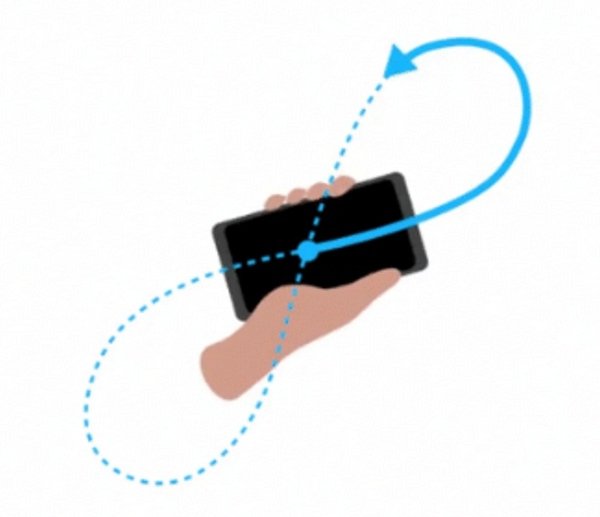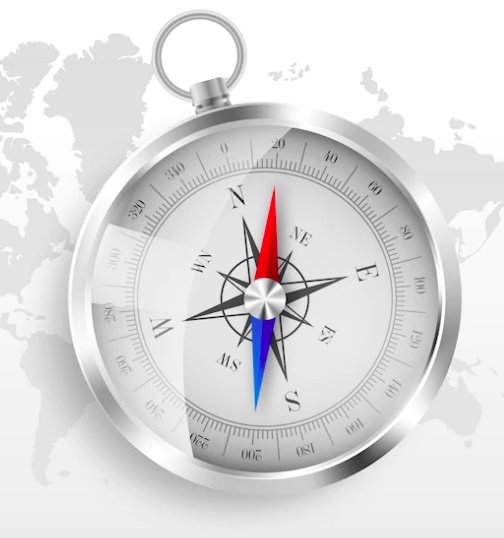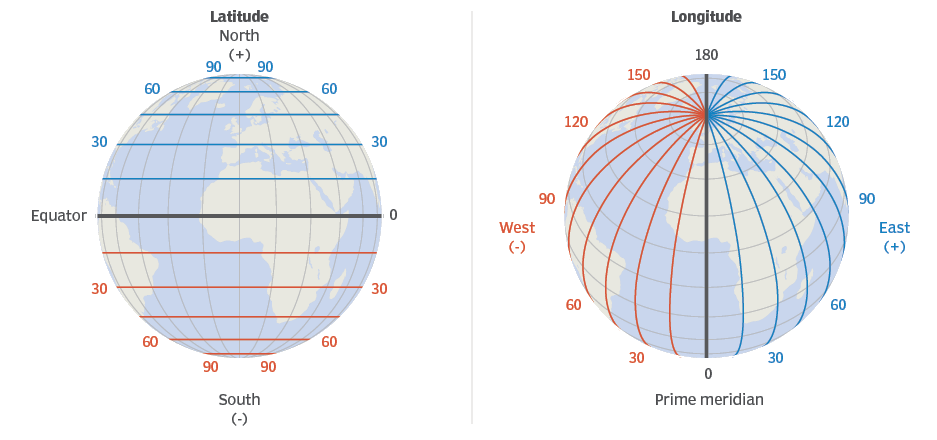N 0 °
GPS:

LAT:
LNG:
ALT:
OnlineCompass2.com is a free, accurate, and user-friendly online compass that helps you find the north direction instantly using your device. Whether you're hiking in the wild, navigating a new city, or simply exploring your surroundings, this digital compass works right from your browser—no app download required. It uses your smartphone or computer's built-in sensors to provide real-time orientation, showing true north, south, east, and west directions.
Designed for convenience and accessibility, OnlineCompass2.com is perfect for travelers, outdoor adventurers, students, and anyone who needs quick directional assistance. It’s completely free to use, works in multiple languages, and respects your privacy. Just open the site, allow location access, follow simple calibration if needed, and you’re ready to go. Stay on track, wherever you are—with OnlineCompass2.com.
A compass is a tool for determining direction. It is one of the most crucial navigational tools. The most popular kind of compass is a magnetic compass. Due to their widespread use, the word "compass" now almost usually refers to a magnetic compass. Although this sort of compass has undergone substantial design and construction changes throughout the years, its basic operation has not altered. A magnetised needle that is permitted to rotate to align with the Earth's magnetic field makes up magnetic compasses. The ends are oriented toward magnetic north and south, respectively.

While holding your device and following the method shown in above picture, move your phone around three times, tracing a figure eight in the process. This will calibrate your phones compass.
Major reasons of improper reading of compass is due to magnetic fields and metalic objects near to the phone. Avoid plaing your phone near magnetic field like laptop, etc.

The mobile phone's electronic compass is an extremely useful tool. The Magnetometer sensor is the essential part of the electronic compass.
Your tablet or smartphone's magnetometer sensor also makes use of cutting-edge solid state technology to build a tiny Hall-effect sensor t hat measures the Earth's magnetic field along three vertical axes, X, Y, and Z.
The magnetometer is housed in a tiny electronic chip, which frequently includes an additional sensor (usually an integrated accelerometer) that aids in the correction of the raw magnetic measurements using tilt data from the auxiliary sensor.
The magnetometer is essential for determining the relative orientation of your device to the magnetic north of the Earth in addition to typical rotational information.
Knowing that the sun rises in the east and sets in the west, your left hand should indicate north when you face east, and your right hand should indicate south. It will be the opposite way around if you are in the Southern Hemisphere.
Our online compass goes beyond traditional navigation tools by integrating ancient wisdom with modern technology. We've incorporated principles from Vastu Shastra, an ancient Indian architectural science, to provide users with directional guidance that promotes harmony and balance in their surroundings.

Vastu Shastra offers insights into the optimal alignment of living spaces with natural energies. By integrating Vastu principles into our compass tool, users can not only find their way but also enhance the flow of positive energy within their homes, promoting well-being and prosperity.

According to Vastu principles, sleeping with your head towards the South or East fosters better health and prosperity. Our compass aids in identifying optimal sleeping directions, promoting restful sleep and overall wellness.
The orientation of your sleeping position can significantly impact your physical health and mental well-being. Our compass tool helps users identify optimal sleeping directions based on Vastu principles, fostering restful sleep and rejuvenation.
Vastu Shastra is based on the five essential elements — Prithvi (earth), Agni (fire), Tej (light), Vayu (wind), and Akash (ether), which are known as panchabhutas. The entire universe including the earth and the human body is believed to be made up of these five elements which influence the cosmic forces and forms of energy. You can see the directions naming in sunskruit is as per these five elements.

Vastu Shastra, an ancient Indian architectural science, emphasizes the harmonious alignment of living spaces with natural forces to promote well-being and prosperity. It defines the flow of air, light, and magnetic fields within a house to facilitate the easy movement and alignment of essential elements such as fire, water, air, light, and the Earth's magnetic field.
Best position for sofa: According to Vastu Shastra, the ideal position for a sofa is against a solid wall in the living room, preferably in the south or west direction. This promotes stability and support, allowing for comfortable seating and fostering positive energy flow in the space.
Kitchen: The kitchen holds significant importance in Vastu Shastra as it represents the source of nourishment and prosperity. It is recommended to place the kitchen in the southeast corner of the house, with the cooking stove positioned facing east. This ensures that the cook faces east while preparing meals, harnessing the beneficial energy of the rising sun.
Puja Room (Deoghar): The puja room, or Deoghar, is a sacred space dedicated to spiritual practices and rituals. It is ideally located in the northeast corner of the house, as this direction is associated with purity and divine energy. The puja room should be kept clean and clutter-free, with idols or sacred objects placed facing east or north.
Main Entrance: The main entrance of the house is considered the gateway for energy flow and prosperity. It is recommended to have a well-lit and welcoming entrance facing east or north to invite positive energy into the home. Avoid obstacles or clutter near the entrance to ensure smooth energy flow.
Stairs: Stairs should be positioned in a clockwise direction and located in the southwest, south, or west areas of the house. This placement ensures stability and upward movement, promoting progress and prosperity for the inhabitants.
Small and Big Trees: Trees play a vital role in Vastu Shastra as they influence the flow of energy around the house. Small trees can be planted in the northeast or east direction to enhance positivity and growth, while large trees are best positioned in the southwest or west to provide stability and protection.
Bedroom Position: Bedrooms should ideally be located in the southwest or south direction of the house, promoting restful sleep and relaxation. The bed should be placed with the head towards the south or east and away from any sharp corners or beams to ensure peaceful energy flow.
Toilets: Toilets should be located in the northwest or west direction of the house and kept closed when not in use to prevent the outflow of energy. It is essential to maintain cleanliness and hygiene in the toilet area to avoid negative energy accumulation.
Staircase: Staircases should be designed to promote smooth and uninterrupted movement between floors. Avoid spiral or irregularly shaped staircases, and ensure adequate lighting and handrails for safety and convenience.
Parking: Parking spaces should be located in the northeast or north direction of the house, ensuring that vehicles face east or north while parked. This placement promotes positive energy flow and prevents obstruction of the main entrance.
Study Room: The study room should ideally be located in the northeast or east direction of the house, promoting concentration, creativity, and academic success. Ensure ample natural light and a clutter-free environment to enhance productivity and focus.
By adhering to the principles of Vastu Shastra and implementing appropriate arrangements for these key areas, individuals can create living spaces that are harmoniously aligned with natural energies, fostering balance, prosperity, and well-being.
In Vastu Shastra, the flow of air and sunlight is of utmost importance as it directly impacts the balance and harmony within a living space. According to Vastu principles, the direction of airflow and sunlight is intricately linked to the five elements (Pancha Mahabhutas) – Earth, Water, Fire, Air, and Space (Akasha). Each direction is associated with specific attributes and benefits, aligning with the natural flow of energy and promoting well-being.
Wayu (Air) Direction (Northwest):
Agni (Fire) Direction (Southeast):
Varuna (Water) Direction (North):
Ishaan (Space) Direction (Northeast):
Nairutya (Earth) Direction (Southwest):
An online compass is a digital tool accessible through the internet that provides directional guidance, emulating the functionality of a traditional magnetic compass. It utilizes the sensors in a device, such as a magnetometer and gyroscope, to determine the user's orientation relative to the Earth's magnetic poles. This allows users to find their bearings and navigate accurately without needing a physical compass.
Online compasses are particularly useful for a variety of applications, including navigation during outdoor activities such as hiking, camping, and geocaching. They are also valuable in educational settings, helping students learn about geography and the principles of magnetism. Moreover, online compasses can be integrated into various digital platforms and apps, enhancing user experiences by providing real-time directional information.
One of the significant advantages of an online compass is its accessibility. Since it is web-based, users can access it from any device with an internet connection, including smartphones, tablets, and computers. This makes it a versatile tool for travelers, outdoor enthusiasts, and anyone needing quick and accurate directional information.
Additionally, online compasses can offer enhanced features compared to traditional compasses. These may include the ability to set waypoints, track routes, and integrate with GPS systems for more precise navigation. Some online compasses also provide visual aids, such as maps and augmented reality overlays, to help users better understand their surroundings and make informed decisions.
Overall, an online compass is a convenient and reliable tool for modern navigation needs, combining the timeless principles of magnetism with the advanced capabilities of digital technology.
North-Northwest (NNW): A direction between North and Northwest, usually at 337.5°.
These 16 principal compass directions provide precise navigation and orientation for users, making an online compass a versatile and reliable tool for various applications.
An online compass works by utilizing the sensors built into a device, primarily the magnetometer and gyroscope, to determine the device's orientation relative to the Earth's magnetic field. Here’s a step-by-step explanation of how an online compass functions:
Definition: Latitude is the distance north or south of the Equator, measured in degrees. The Equator represents 0° latitude, the North Pole is at 90°N, and the South Pole is at 90°S.
Range: 0° at the Equator to 90° at the poles (North or South).
Definition: Longitude is the distance east or west of the Prime Meridian, which is an imaginary line running from the North Pole to the South Pole and passing through Greenwich, England. Longitude is also measured in degrees.
Range: 0° at the Prime Meridian to 180° east or west.

A compass is a tool that helps in navigation by showing direction relative to the Earth's magnetic poles. Here's how you can make use of a compass along with latitude and longitude:
Suppose you are at a location with coordinates 40°N latitude and 74°W longitude (New York City) and you want to travel to a place at 34°N latitude and 118°W longitude (Los Angeles):
By using latitude and longitude coordinates along with a compass, you can accurately navigate from one location to another.
Online compasses and traditional compasses both serve the purpose of providing directional guidance, but they differ significantly in accuracy due to their underlying technologies and sensor usage.
Traditional compasses rely on a magnetic needle that aligns itself with the Earth's magnetic field. They are generally reliable in open areas away from magnetic interference (such as metal objects, electronic devices, or magnetic fields) and provide consistent readings when used correctly. However, their accuracy can be affected by:
Online compasses utilize various sensors, primarily the magnetometer and gyroscope, to determine direction:
Calibration is crucial for maintaining the accuracy of both online and traditional compasses:
In summary, while traditional compasses provide reliable accuracy in ideal conditions, online compasses can offer comparable accuracy through advanced sensors and calibration techniques. However, the performance of online compasses can be affected by the device's environmental factors, sensor quality, and calibration effectiveness. Users must be aware of these factors when choosing between the two for their navigation needs.